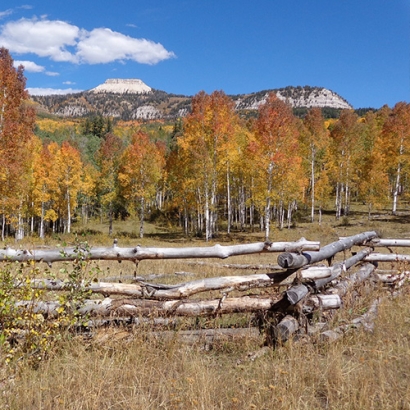
The U.S. Department of Agriculture Forest Service conducted scoping and a comment period in 2021 to ensure the public was able to provide input regarding the two parcels proposed for inclusion in this BLM lease sale.
“Public input helps the BLM make informed decisions on the management of public lands,” said BLM Utah State Director Greg Sheehan. “Geothermal leasing supports our renewable energy priorities by providing energy that can be developed with minimal carbon emissions.”
The BLM manages vast stretches of public lands that have the potential to make significant contributions to the nation’s renewable energy portfolio. To promote our clean energy goals, the BLM provides sites for environmentally sound development of renewable energy on public lands and new transmission routes to connect into the grid.
Geothermal energy is a renewable resource that generates baseload electricity with minimal carbon emissions. It is an abundant resource, especially in the West, where the BLM has authority to manage geothermal leasing on approximately 245 million acres of public lands, including 104 million acres of Forest Service lands. Geothermal energy can also be used to heat buildings, operate greenhouses, and support aquaculture operations.
BLM-issued geothermal leases are for a 10-year period. For each parcel, 50 percent of the bid, rental receipts and subsequent royalties are disbursed to the respective state, an additional 25 percent is disbursed to the respective county, and 25 percent remains in the U.S. Department of the Treasury. Each lease contains standard stipulations to protect endangered species and cultural resources and ensures that development is safe and environmentally responsible. After parcels are leased, lessees must submit site-specific proposals for additional in-depth analysis before energy development can begin.
Opportunities for public input on these geothermal lease parcels occurred in May 2021, when the Forest Service released an environmental assessment, Leasing of Geothermal Parcels UTU-086295 and UTU-086298, which can be found on the Forest Service's website.
A legal notice was published in The Richfield Reaper and Millard County Chronicle on May 5, 2021. The Forest Service signed the decision record and finding of no significant impact a year later, in May 2022. On Aug. 12, 2022, the BLM received the Forest Service’s consent to lease these two parcels. In accordance with the National Environmental Policy Act, the BLM is adopting the Forest Service’s environmental assessment.
The environmental documents, lists and maps of the parcels, and attached stipulations can be found on the BLM Land Use Planning and NEPA Register.
Across the West, the BLM is currently processing 65 utility-scale onshore clean energy projects proposed on public lands. This includes solar, wind and geothermal projects, as well as interconnection gen-tie lines that are vital to clean energy projects proposed on non-federal land. These projects have the combined potential to add over 31,000 megawatts of renewable energy to the western electric grid. The BLM is also undertaking the preliminary review of more than 100 applications for solar and wind development, as well as nearly 50 applications for wind and solar energy testing.

